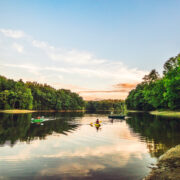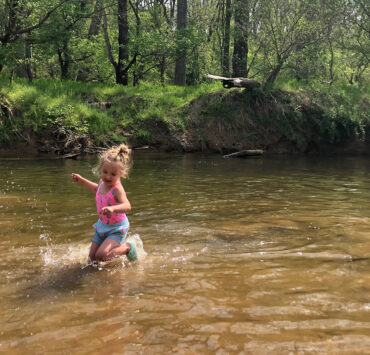Mallows Bay: Ride the Current to Ships of the Past

Maryland is defined by its waterways. The Atlantic Ocean, the Chesapeake Bay, the Potomac and Susquehanna Rivers—even the man-made C&O Canal—are central to the lives and livelihoods of Marylanders.
Then there’s the bizarre story of Maryland’s most infamous watery gravesite, Mallows Bay.
Located in shallow, murky waters on the east side of the Potomac River near Nanjemoy, a rural outpost in Charles County about 30 miles south of D.C., Mallows Bay is the final resting place of more than a hundred former military vessels. In a bizarre episode from American naval history, wood-hull cargo ships originally ordered by the federal government for use in World War I were eventually sold, salvaged, burned, and abandoned here almost a century ago.
Today, the Bay is a magnet for kayakers who paddle around the skeletal remains of this so-called “ghost fleet” in Southern Maryland. On a warm, fall Sunday in September, my wife Laura and I decided we would kayak the site.
*****
The Cliff’s Notes version of how Mallows Bay became a ship graveyard is a fascinating tale and, by today’s environmental standards, equally disturbing.
Late in World War I, the War Department wanted to intimidate the Germans with a massive show of military production might. In November of 1917 the government contracted dozens of shipyards to build and deliver 1,000 steam-powered wooden supply ships, boasting that we could “build them faster than the Germans can sink them.”
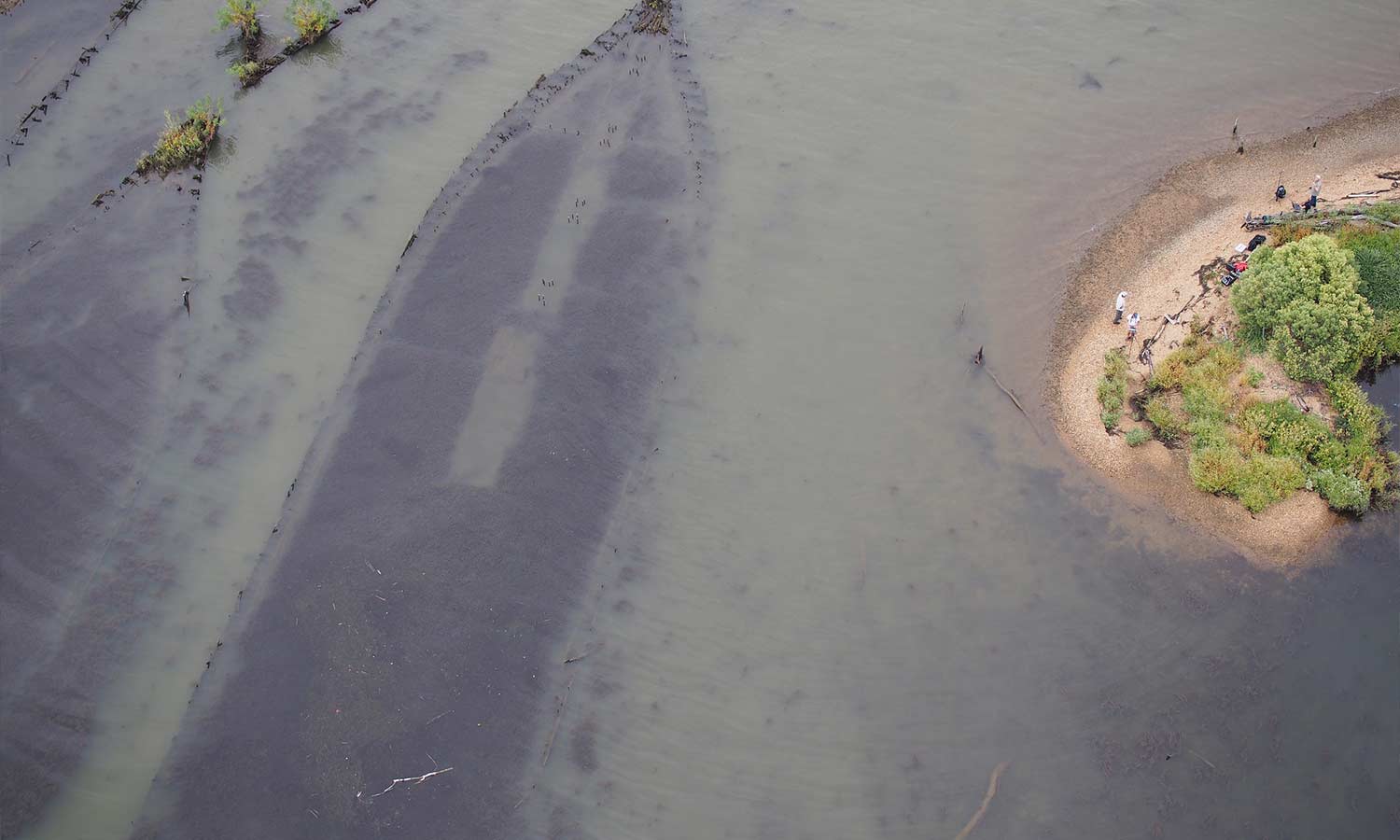
According to the Washington Post, contractors finished only 364 ships, most of which were commissioned too late to matter when the war ended the following November. Suddenly, the feds were stuck with a bunch of worthless ships. Initially, the government docked many of them in Virginia’s James River. Monthly rental costs of $50,000 quickly became fiscally untenable.
In 1922, the government sold 233 ships for the cut-rate price of $750,000 to the Western Marine & Salvage Company, which moved the boats to Alexandria. The maritime gods wanted no part of it. Storms and frequent river floods tore the boats from their moorings. Prevailing winds typically push ships toward the Potomac’s eastern, Maryland side.
Western Marine relented and bought the Mallows Bay area in 1924 from Maryland. Ships were stripped of any valuables and second-use metals, driven east across the Potomac, run aground at high tide in the Bay’s muddy flats, and their wooden hulls set aflame.
Although photos today of Mallows Bay from above are astounding, few pictures are as striking as one from November 7, 1925, when 31 ships, tied together side-by-side, were burned simultaneously. A cacophony of thousands of squealing shipboard rats could be heard from the shores.

Today, the 18-square-mile Mallows Bay Park is a kayaker’s paradise. Charles County’s day-use facility includes a large parking area, boat dock, a kayak launch, and restrooms. Steps from the water is an information gazebo that offers free, pocket-sized printed maps that detail the history of the shipwrecks. Online, the Chesapeake Conservancy maintains a useful, interactive GPS map of the site. In 2019, five years after Maryland Gov. Martin O’Malley initiated the nomination process, the National Oceanic and Atmospheric Administration officially certified the bay as part of the Mallows Bay-Potomac River national marine sanctuary.
*****
Those with their own kayaks can self-tour Mallows Bay, but my wife and I don’t have one. The good news is that Atlantic Kayak, operated by Kim DeMarr in nearby Indian Head, offers 90-minute and 2.5-hour kayak tours of the ghost fleet three Sundays per month from April through October. (Atlantic Kayak keeps the tour groups small, so plan ahead because these popular junkets book quickly. The tour is well worth the fee.)
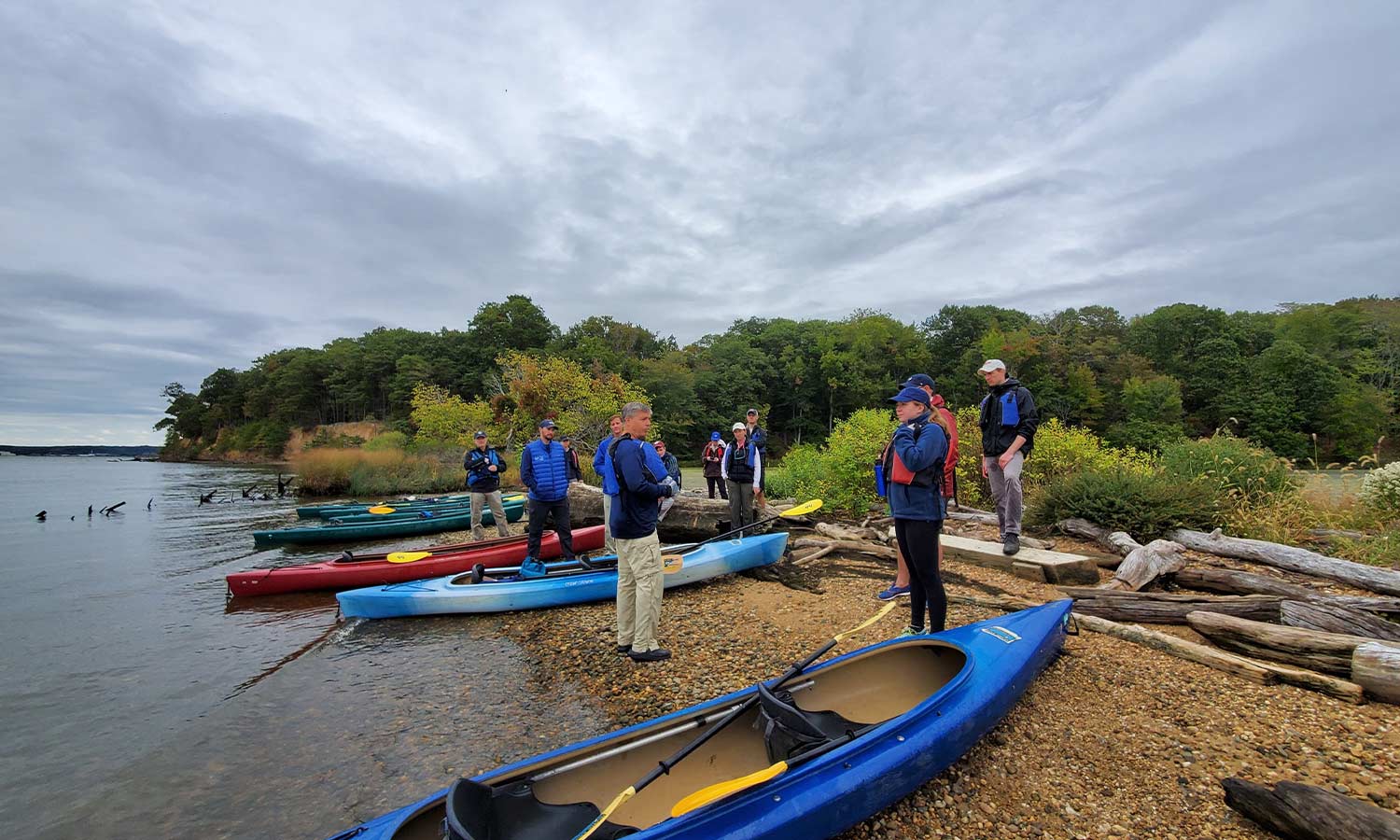
Before the group launches, DeMarr delivers a brief history of the ships, including details about their fates after Western Marine burned and abandoned them. Apparently, locals during the Great Depression denuded the ships of whatever scrap metals remained. Local mom-and-pops groceries added dynamite to their shelves to sell to hardscrabble scavengers. At the onset of World War II, the federal government briefly considered trying to reclaim whatever scrap metal remained on the ghost fleet but abandoned the plan as too costly.
DeMarr updates her knowledge of the Bay’s unusual history by consulting locals who provide a living, institutional memory for the site—most notably Don Shomette, whose family has lived near Mallows Bay for decades. Her commitment to historical detail is matched only by her devotion to the Bay’s environmental health. She fishes cups and other flotsam from the water during the tour and tucks the trash into a bungee cord affixed atop her kayak expressly for that purpose.
Oddly, the most prominent ship in the Bay, and the first stop on the tour, is the only one that’s neither wooden nor a former military vessel. The Accomac was a steel-hulled ship that ferried passengers between Cape Charles and Norfolk, Virginia. Dumped here in 1973 by its owner to avoid more costly disposal options—“he got away with it,” says DeMarr—the Accomac stands upright, protruding well out of the water. An older couple DeMarr took on a tour a year ago said they first met on the ferry.
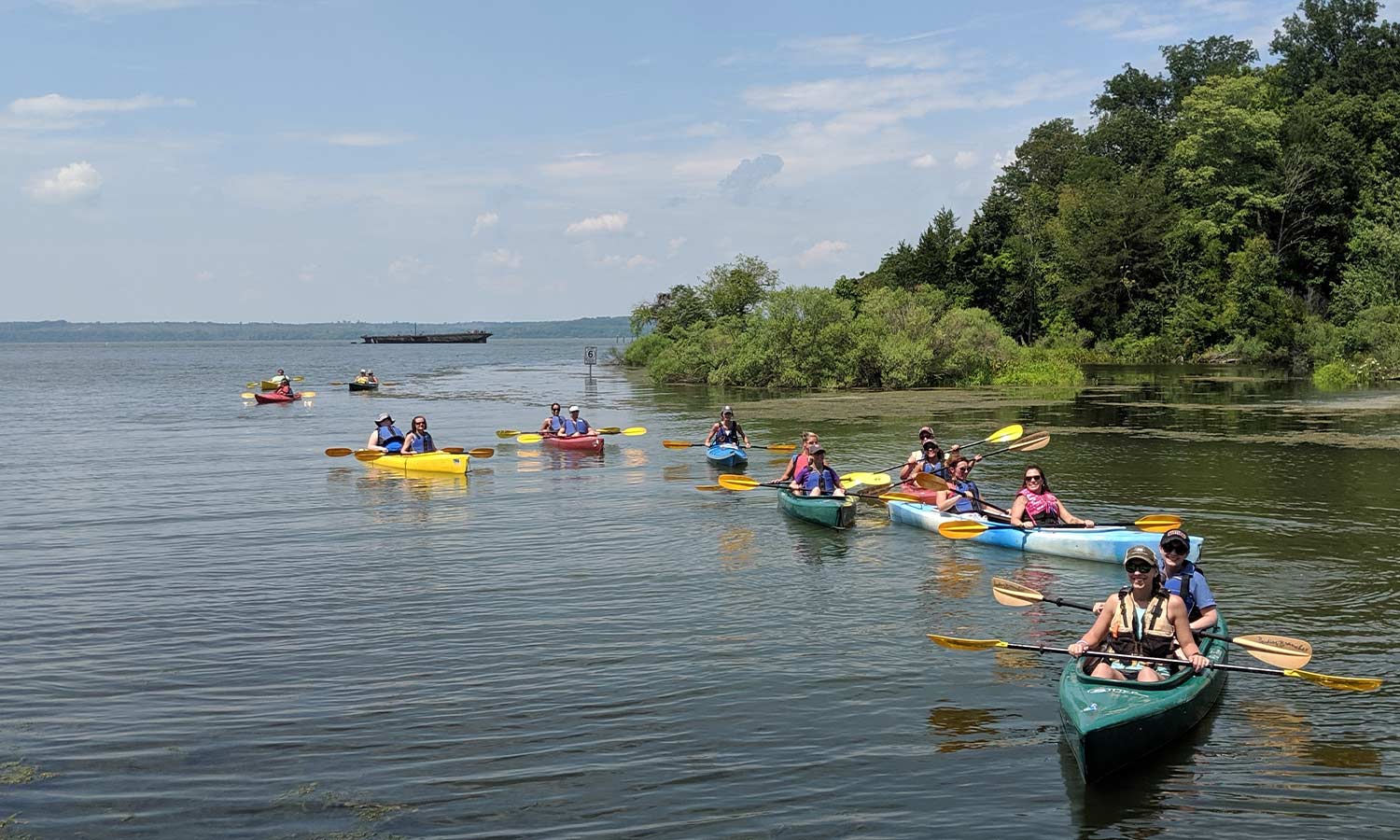
Paddling among the wooden military ships is a surreal experience. As wreckage slowly comes into view, the outlines of wrecked hulls become clearer. Paddling a bit closer, the sun’s reflection on the surface yields to the tip of a bow or stern. Laura and I tracked alongside one ship’s convex profile, held together by the worn and weathered steel pins, the only metal vestiges that survived a century of scrapping, salvage crews, and nature’s ongoing assault. You pause a moment and squint, imagining the ships in their original, full outlines.
Back in the present, the ships’ fates are rather modest. Their hulls today effectively serve as ship-shaped plant boxes filled with trees and other water flora. Beavers and fish have won the longer war, turning the boats’ keels into artificial riverbed reefs.
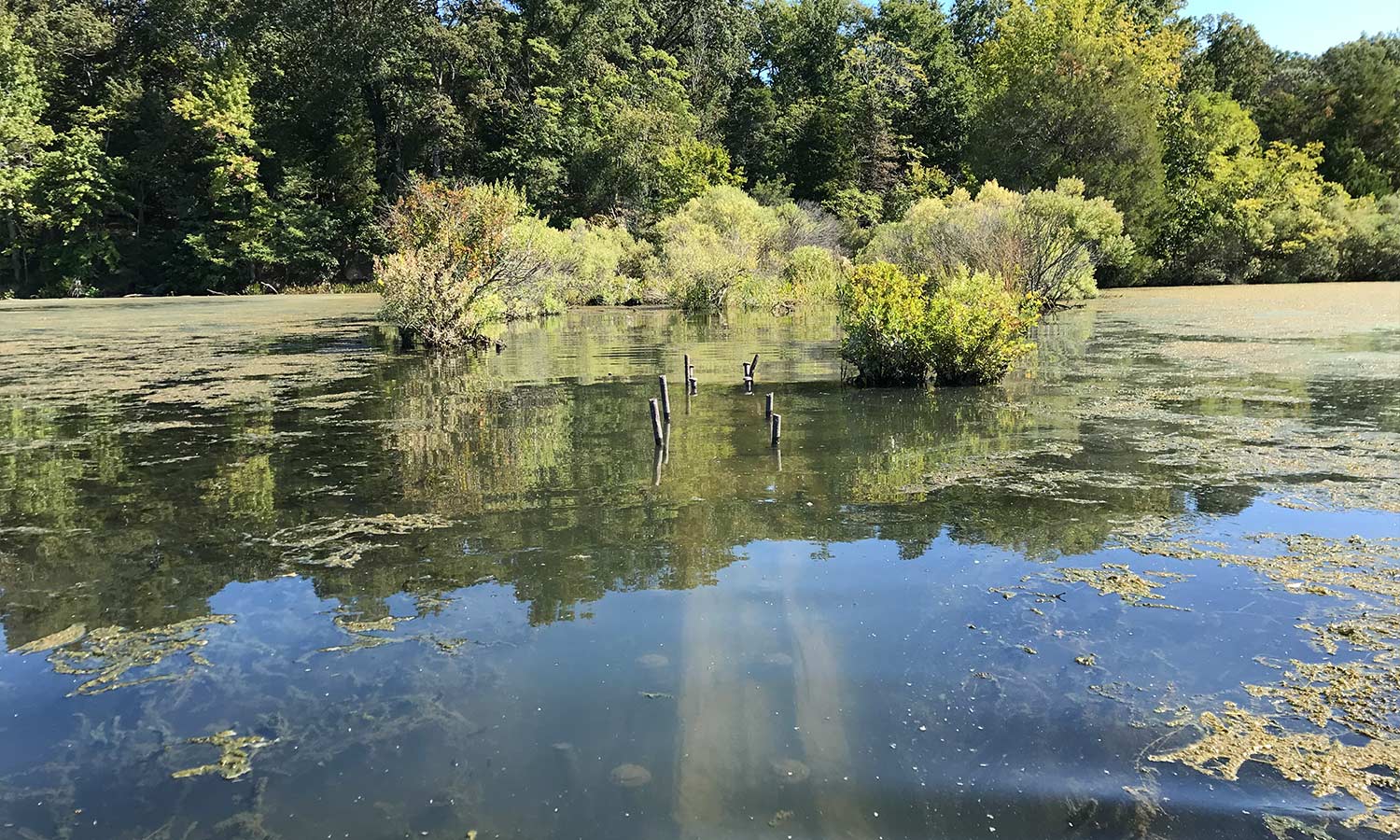
An especially nifty part of DeMarr’s tour is the chance to explore the so-called “Three Sisters.” Three wrecks — the Dertona, Moosabee, and the “Heron Wreck”—form a makeshift triangle into which kayakers can paddle by cutting through a narrow passage clogged by overgrown tree branches. Tucked into this quiet, canopied corner, surrounded by a mix of wood, metal, and greenery, the river falls silent as the broad Potomac disappears from view. You understand immediately why the beavers converted this spot into their own, domestic nook.
DeMarr and her team provide everything you need: kayaks, paddles, and life vests, of course. But the selling point is DeMarr’s detailed tour narratives, which alone are worth the fee and three hours of your time.
It’s a small price to pay to paddle yourself through a century’s history.
While You’re in the Area
If you’re looking to continue enjoying the outdoors, head north on MD-224 to Smallwood State Park in Marbury, MD. The park offers camping, hiking, boat ramps, a nature center, a tire playground, and more. You can reserve a campsite or rent a cabin, or spend a few hours exploring the park. While you’re there, check out Mattawoman Creek Art Center, a short five-minute drive from the park. Hungry? Continue on MD-224 to OBO Pizzas location in Indian Head. Or, check out our itinerary for a weekend trip in Charles County!
Lead Photo: Atlantic Kayak
About the Author
Tom Schaller is a political science professor at UMBC and freelance writer. He has travelled to more than 40 countries on all six inhabited continents. He can be reached at schaller67@gmail.com.


